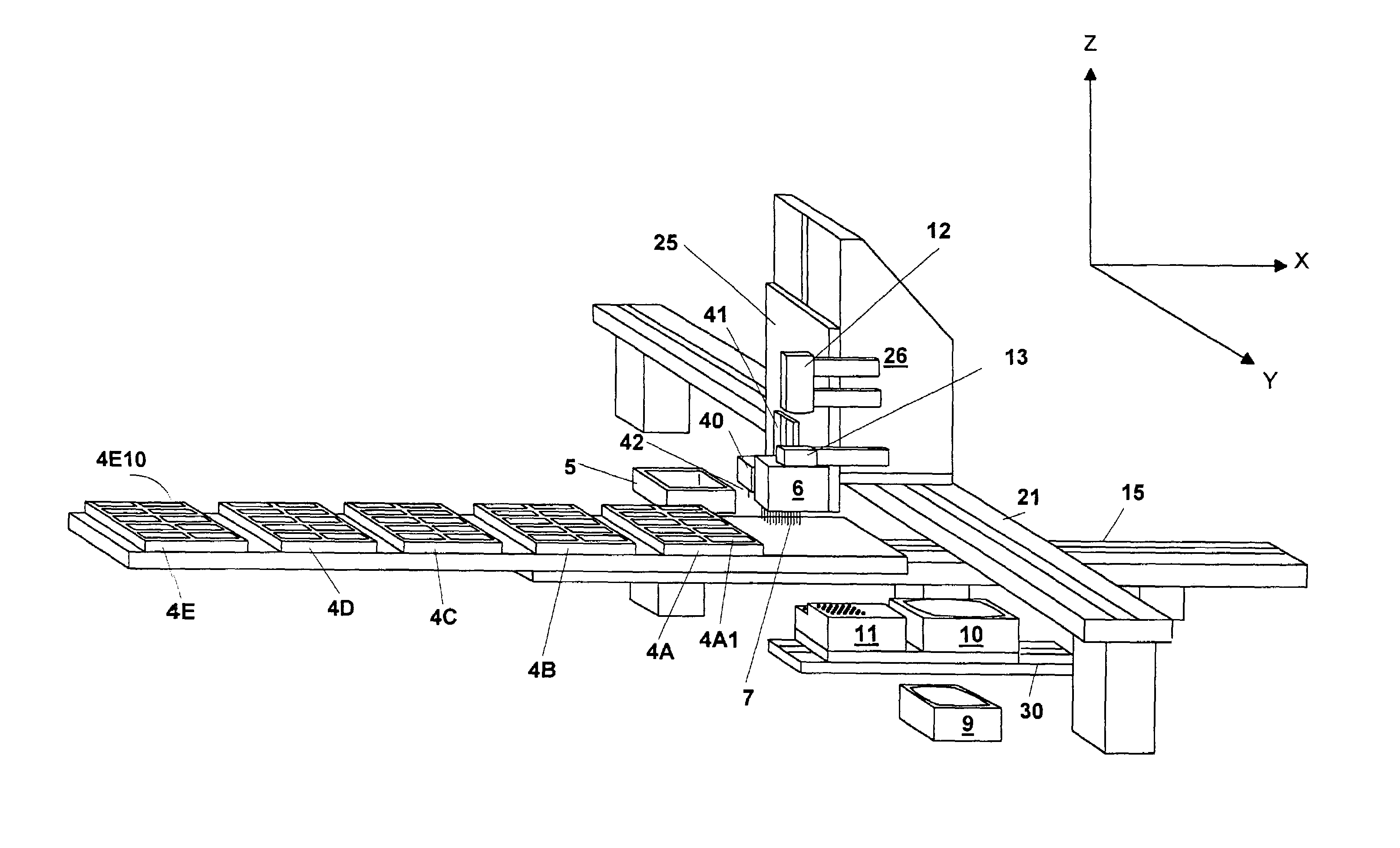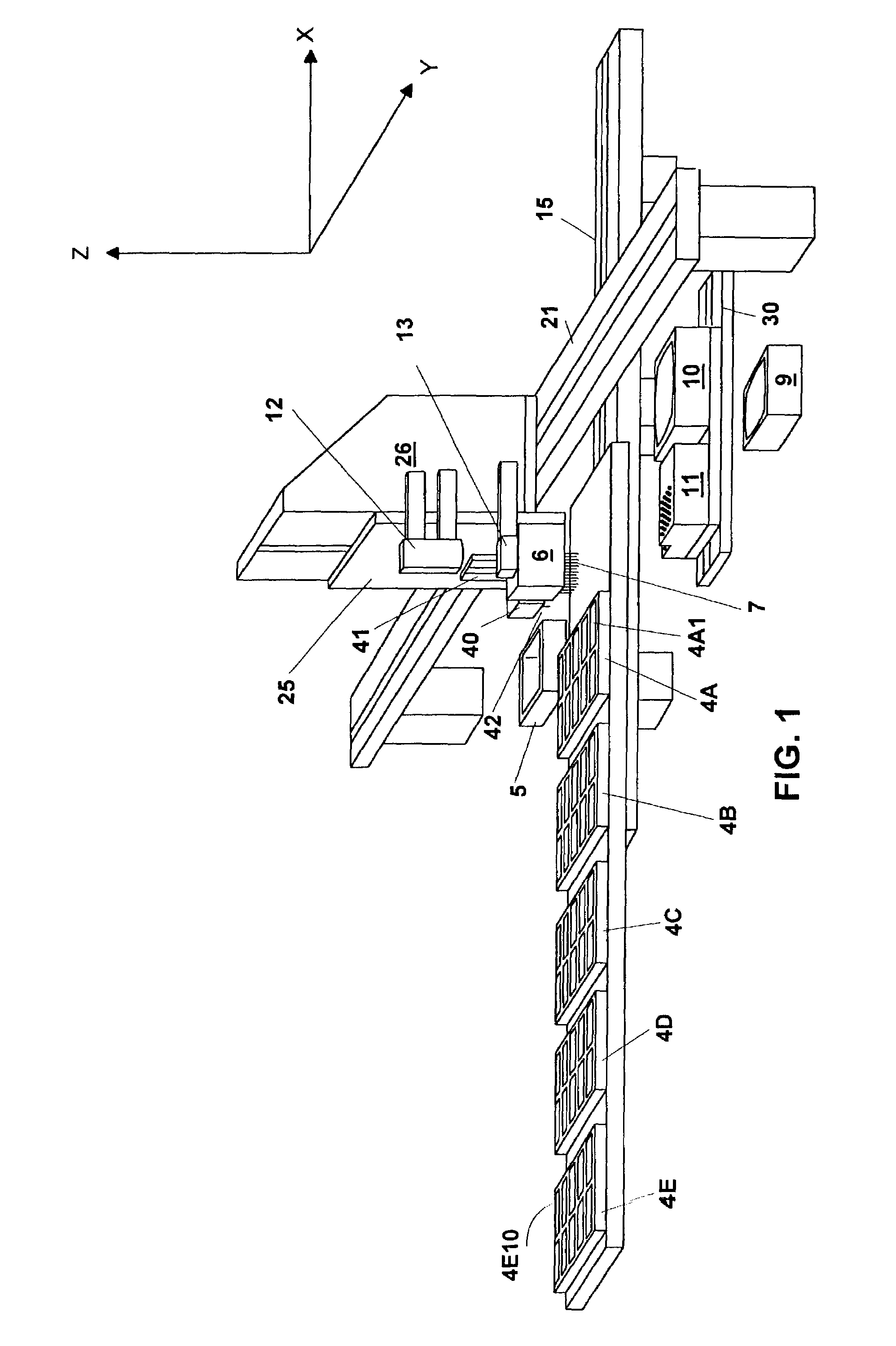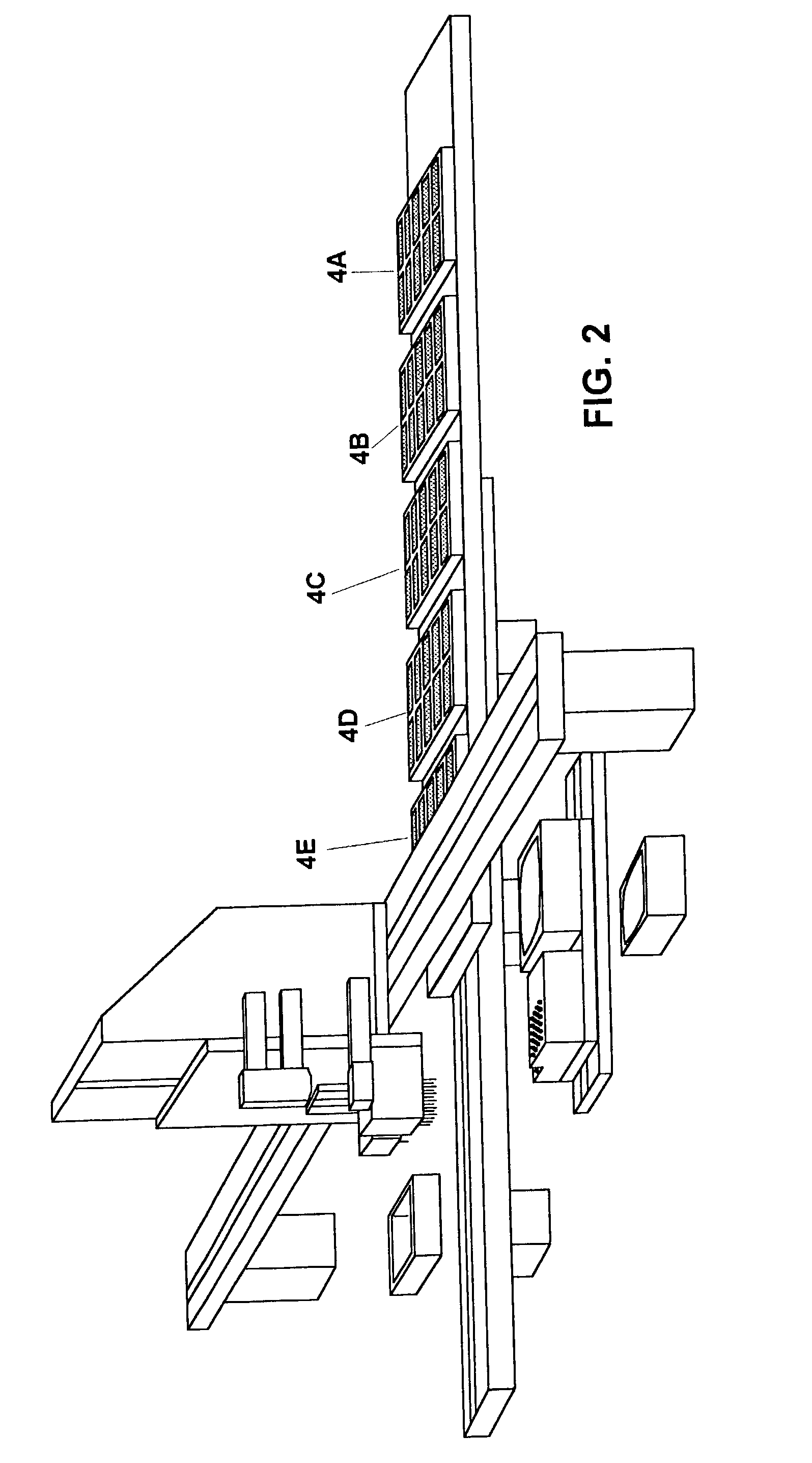Microarray dispensing with real-time verification and inspection
a microarray and real-time verification technology, applied in the direction of character and pattern recognition, element comparison, flat carrier supports, etc., can solve the problems of improper positioning of spots on slides, affecting the efficiency of the operation, and affecting the spotting accuracy of the solution, so as to improve the spotting accuracy
- Summary
- Abstract
- Description
- Claims
- Application Information
AI Technical Summary
Benefits of technology
Problems solved by technology
Method used
Image
Examples
third preferred embodiment
[0104]A third preferred embodiment of the present invention is seen by reference to FIG. 42. FIG. 42 shows a perspective view of microarrayer 250. In the third preferred embodiment, dispense head 202 is connected via mounting plate 213 to linear actuator 214 so that dispense tips 208 can be raised and lowered along the z-axis. Camera 215 and strobe 216 are also mounted to mounting plate 213 and can be raised and lowered along the z-axis by linear actuator 214. Linear actuator 214 is mounted to linear actuator 217 so that it can move along the y-axis.
[0105]Platform 218 is mounted to linear actuator 219 so that it can move along the x-axis. 140 slides 220(1)–220 (140) are mounted on top of platform 218. Microplates 204(A–C) and pre-spot slide holder 205 having pre-spot slide 206 are placed on top of platform 218.
Operation of the Third Preferred Embodiment Removing Solution From the Microplate
[0106]To remove solution from microplate 204(A), linear actuator 219 moves platform 218 along ...
PUM
| Property | Measurement | Unit |
|---|---|---|
| travel distance | aaaaa | aaaaa |
| travel distance | aaaaa | aaaaa |
| travel distance | aaaaa | aaaaa |
Abstract
Description
Claims
Application Information
 Login to View More
Login to View More - R&D
- Intellectual Property
- Life Sciences
- Materials
- Tech Scout
- Unparalleled Data Quality
- Higher Quality Content
- 60% Fewer Hallucinations
Browse by: Latest US Patents, China's latest patents, Technical Efficacy Thesaurus, Application Domain, Technology Topic, Popular Technical Reports.
© 2025 PatSnap. All rights reserved.Legal|Privacy policy|Modern Slavery Act Transparency Statement|Sitemap|About US| Contact US: help@patsnap.com



